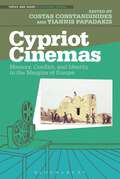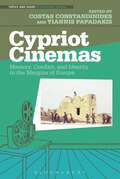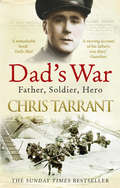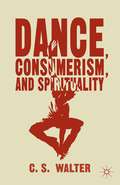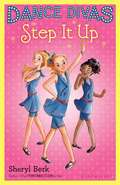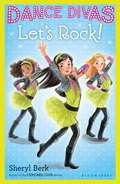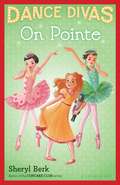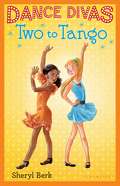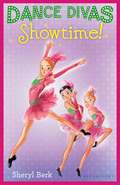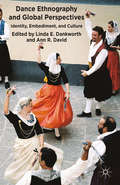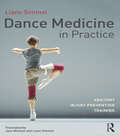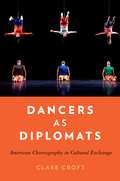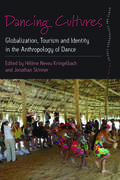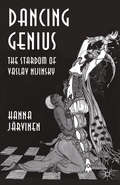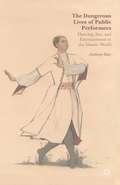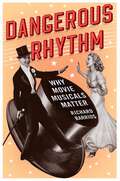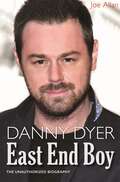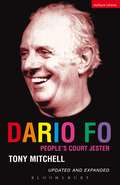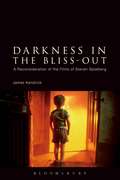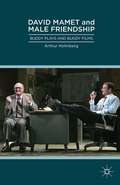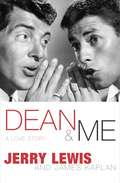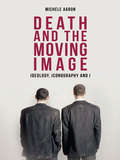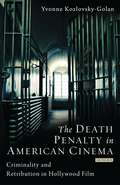- Table View
- List View
Cypriot Cinemas: Memory, Conflict, and Identity in the Margins of Europe (Topics and Issues in National Cinema)
by Costas Constandinides Yiannis PapadakisCyprus, the idyllic "island of Aphrodite,†? is better known as a site of conflict and division between Greek Cypriots and Turkish Cypriots, rather than for its film production. Constandinides and Papadakis work to rectify this dearth of information by discussing the ouevre of filmmakers engaging with the island's traumatic legacies: anti-colonial struggles, post-colonial instability, interethnic conflict, external interventions and war. Starting with the cinema of the 1960s, when the island became a republic, the collection focuses on the recent decades of filmmakers exploring issues of conflict, memory, identity, nationalism, migration and gender, as well as the work of filmmakers who chose to cooperate across the ethnic divide. Cypriot Cinemas utilizes a methodology that engages all necessary perspectives for an illuminating critical discussion: historical, theoretical and comparative (Greek Cypriot and Turkish Cypriot films in relation to regional film cultures/practices). While the volume develops a discussion based on the reading of the political in Cypriot films, it also looks at other film cultures and debates such as (s)exploitation films and transnational cinema.
Cypriot Cinemas: Memory, Conflict, and Identity in the Margins of Europe (Topics and Issues in National Cinema)
by Costas Constandinides Yiannis PapadakisCyprus, the idyllic “island of Aphrodite,” is better known as a site of conflict and division between Greek Cypriots and Turkish Cypriots, rather than for its film production. Constandinides and Papadakis work to rectify this dearth of information by discussing the ouevre of filmmakers engaging with the island's traumatic legacies: anti-colonial struggles, post-colonial instability, interethnic conflict, external interventions and war. Starting with the cinema of the 1960s, when the island became a republic, the collection focuses on the recent decades of filmmakers exploring issues of conflict, memory, identity, nationalism, migration and gender, as well as the work of filmmakers who chose to cooperate across the ethnic divide. Cypriot Cinemas utilizes a methodology that engages all necessary perspectives for an illuminating critical discussion: historical, theoretical and comparative (Greek Cypriot and Turkish Cypriot films in relation to regional film cultures/practices). While the volume develops a discussion based on the reading of the political in Cypriot films, it also looks at other film cultures and debates such as (s)exploitation films and transnational cinema.
Dad's War: Father, Soldier, Hero
by Chris TarrantThe Sunday Times Top Ten BestsellerChris Tarrant and his father Basil were very close, they played sport together, watched sport together and shared the same sense of humour. Chris loved and admired his father but it was only after his death he realised that he hardly knew him at all … Basil Avery Tarrant grew up in 1920s Reading, where the smell of beer and biscuits from the local factories filled the air. He worked as an administrator in a local factory and spent his Saturday nights down at the music halls. But what happened to Basil during the war, and how he came to be awarded the Military Cross, remained a mystery to Chris and his family for nearly sixty years. In this emotional journey, Chris discovers that Basil was involved in some of WWII’s most significant campaigns, including the Dunkirk evacuation and the D-Day landings, and also took part in some of the most brutal, close-range fighting in Cleve. Dad's War is a profoundly moving and heartfelt tribute to a much-loved father, but it’s also a sincere and humble commemoration of the bravery and sacrifice of the soldiers of WWII.
Dance, Consumerism, and Spirituality
by C. WalterDance has proliferated in movies, television, Internet, and retail spaces while the spiritual power of dance has also been linked with mass consumption. Walter marries the cultural studies of dance and the religious aspects of dance in an exploration of consumption rituals, including rituals of being persuaded to buy products that include dance.
Dance Divas: Step It Up (Dance Divas)
by Sheryl BerkTrouble is brewing between the divas just before their big upcoming Dance Fusion competition. Liberty is stepping on Rochelle's toes (figuratively and literally!). Anya and Bria can't agree on costumes for their duet. And Scarlett and Gracie are bickering over what to name their new kitten (Scarlett wants "Baryshnikov" but Gracie likes "Mustard"). Miss Toni is mad, mad, mad-but she has an idea to fix the problem: a camping retreat, where these girls will have to learn the true meaning of teamwork or be left out in the dark.
Dance Divas: Let's Rock! (Dance Divas)
by Sheryl BerkThe Dance Divas have conquered the stage, and now they've set their sights on film! Liberty's mom (choreographer to the stars) lets all five girls appear in a pop star's new music video, but it's Bria who wins the lead. Liberty can't believe she wasn't chosen by her own mom!Meanwhile, with everyone's focus on Hollywood, Miss Toni decides to remind the girls what's going on in their own community by having everyone volunteer at a soup kitchen.
Dance Divas: On Pointe (Dance Divas)
by Sheryl BerkDances Minnelli, a famous professional dance troupe in New Jersey, is looking for a few girls to star in their annual holiday production of The Nutcracker. Anya, Liberty, and Scarlett all think they'll be a shoe-in for the lead role of Clara. But it's actually Gracie with her big smile and bubbly energy that catches Mr. Minnelli's eye at the auditions.With so much responsibility resting on her shoulders, will she be able to handle the pressure? Will Liberty learn to love playing a gingerbread man? Can Anya make the most of being a mouse? And can Scarlett handle the fact that her sister is growing into a beautiful dancer . . . and possibly leaving her in the dust?
Dance Divas: Two to Tango (Dance Divas)
by Sheryl BerkMiss Toni decides to shake things up for an upcoming round of dance competitions. She wants to see Liberty and Rochelle perform duets--with the same boy! The girls must dance with Hayden, one of the cutest twelve-year-old boys in town. But things take a dramatic leap when both girls develop their first crushes. Now they aren't just dancing for first place . . . but to win Hayden's heart.
Dance Divas: Showtime! (Dance Divas)
by Sheryl BerkCurtains up on the world of the Dance Divas, a team of 8-12 year-old girls who live to dance! Enter stage left: Scarlett, Rochelle, Liberty, Bria, and Gracie. They all dance together at the same studio, run by their choreographer (and former ballerina) Antoinette "Toni†? Moore. Toni is known for creating winning routines . . . and she doesn't like anything other than first place! These girls travel all around competing for titles-but every number drums up drama. Can Scarlett hold on to her national junior title? And will the other girls learn to work together in order to defeat their fiercest competition yet? This first book in a new dance series is sure to sweep young readers off their feet!
Dance Ethnography and Global Perspectives: Identity, Embodiment and Culture
by Linda E. Dankworth Ann R. DavidDance Ethnography and Global Perspectives presents the work of dance scholars whose professional fieldwork spans several continents and includes studies of the dance and movement systems of varied global communities.
Dance Medicine in Practice: Anatomy, Injury Prevention, Training
by Liane SimmelDance Medicine in Practice is the complete physical textbook for dance, written specifically to help dancers understand the anatomy, function and care of their bodies. Specific chapters are devoted to focusing on the spine, pelvis, hips, knees, feet, shoulders and arms. Each of these covers the following key aspects: Anatomy: bone structure, musculature, and function. How each part of the body moves and how it responds under pressure Pitfalls: Common examples of bad practice and the effect that these can have on the body Self Analysis: How to become aware of and muscle groups and the capacity of each joint. Injury Prevention: Tips and advice on how to best avoid and prevent injury both in training and everyday life Exercises: Simple and effective methods of strengthening, mobilising and relaxing joints and muscles Checklists: Dos and Don’ts for the best dance technique. The best dancers know that looking after their bodies is the key to their success, and Dance Medicine in Practice also covers how to ensure the best possible nutrition, plan and manage training schedules, and ensure that injuries are kept to a minimum both in frequency and impact. It is the best possible companion to a life in dance.
Dance Medicine in Practice: Anatomy, Injury Prevention, Training
by Liane SimmelDance Medicine in Practice is the complete physical textbook for dance, written specifically to help dancers understand the anatomy, function and care of their bodies. Specific chapters are devoted to focusing on the spine, pelvis, hips, knees, feet, shoulders and arms. Each of these covers the following key aspects: Anatomy: bone structure, musculature, and function. How each part of the body moves and how it responds under pressure Pitfalls: Common examples of bad practice and the effect that these can have on the body Self Analysis: How to become aware of and muscle groups and the capacity of each joint. Injury Prevention: Tips and advice on how to best avoid and prevent injury both in training and everyday life Exercises: Simple and effective methods of strengthening, mobilising and relaxing joints and muscles Checklists: Dos and Don’ts for the best dance technique. The best dancers know that looking after their bodies is the key to their success, and Dance Medicine in Practice also covers how to ensure the best possible nutrition, plan and manage training schedules, and ensure that injuries are kept to a minimum both in frequency and impact. It is the best possible companion to a life in dance.
DANCERS AS DIPLOMATS C: American Choreography in Cultural Exchange
by Clare CroftDancers as Diplomats chronicles the role of dance and dancers in American cultural diplomacy. In the early decades of the Cold War and the twenty-first century, American dancers toured the globe on tours sponsored by the US State Department. Dancers as Diplomats tells the story of how these tours shaped and some times re-imagined ideas of the United States in unexpected, often sensational circumstances-pirouetting in Moscow as the Cuban Missile Crisis unfolded and dancing in Burma shortly before the country held its first democratic elections. Based on more than seventy interviews with dancers who traveled on the tours, the book looks at a wide range of American dance companies, among them New York City Ballet, Alvin Ailey American Dance Theater, the Martha Graham Dance Company, Urban Bush Women, ODC/Dance, Ronald K. Brown/Evidence, and the Trey McIntyre Project, among others. During the Cold War, companies danced everywhere from the Soviet Union to Vietnam, just months before the US abandoned Saigon. In the post 9/11 era, dance companies traveled to Asia and Latin America, sub-Saharan Africa and the Middle East.
Dancing Cultures: Globalization, Tourism and Identity in the Anthropology of Dance (Dance and Performance Studies #4)
by Hélène Neveu Kringelbach  Jonathan SkinnerDance is more than an aesthetic of life – dance embodies life. This is evident from the social history of jive, the marketing of trans-national ballet, ritual healing dances in Italy or folk dances performed for tourists in Mexico, Panama and Canada. Dance often captures those essential dimensions of social life that cannot be easily put into words. What are the flows and movements of dance carried by migrants and tourists? How is dance used to shape nationalist ideology? What are the connections between dance and ethnicity, gender, health, globalization and nationalism, capitalism and post-colonialism? Through innovative and wide-ranging case studies, the contributors explore the central role dance plays in culture as leisure commodity, cultural heritage, cultural aesthetic or cathartic social movement.
Dancing Genius: The Stardom of Vaslav Nijinsky
by Hanna JärvinenTracing the historical figure of Vaslav Nijinsky in contemporary documents and later reminiscences, Dancing Genius opens up questions about authorship in dance, about critical evaluation of performance practice, and the manner in which past events are turned into history.
The Dangerous Lives of Public Performers: Dancing, Sex, and Entertainment in the Islamic World
by A. ShayExamining performers from the ancient Mediterranean world to the modern Islamic Middle East, including India and Pakistan, Shay explores the careers, artistic performances, and legacies of these individuals who were forced to produce entertainment and art for, and have sex with, any and all patrons.
Dangerous Rhythm: Why Movie Musicals Matter
by Richard BarriosSingin' in the Rain, The Sound of Music, Camelot--love them or love to hate them, movie musicals have been a major part of all our lives. They're so glitzy and catchy that it seems impossible that they could have ever gone any other way. But the ease in which they unfold on the screen is deceptive. Dorothy's dream of finding a land "Somewhere Over the Rainbow" was nearly cut, and even a film as great as The Band Wagon was, at the time, a major flop. In Dangerous Rhythm: Why Movie Musicals Matter, award winning historian Richard Barrios explores movie musicals from those first hits, The Jazz Singer and Broadway Melody, to present-day Oscar winners Chicago and Les Misérables. History, film analysis, and a touch of backstage gossip combine to make Dangerous Rhythm a compelling look at musicals and the powerful, complex bond they forge with their audiences. Going behind the scenes, Barrios uncovers the rocky relationship between Broadway and Hollywood, the unpublicized off-camera struggles of directors, stars, and producers, and all the various ways by which some films became our most indelible cultural touchstones -- and others ended up as train wrecks. Not content to leave any format untouched, Barrios examines animated musicals and popular music with insight and enthusiasm. Cartoons have been intimately connected with musicals since Steamboat Willie. Disney's short Silly Symphonies grew into the instant classic Snow White, which paved the way for that modern masterpiece, South Park: Bigger, Longer, & Uncut. Without movie musicals, Barrios argues, MTV would have never existed. On the flip side, without MTV we might have been spared Evita. Informed, energetic, and humorous, Dangerous Rhythm is both an impressive piece of scholarship and a joy to read.
Danny Dyer: The Unauthorized Biography
by Joe AllanDanny Dyer is one of the most recognizable names in British film and television. Best known for hard-man roles in Mean Machine and The Football Factory, Danny is now making headlines as Mick Carter, the landlord of the iconic Queen Victoria pub in EastEnders.Yet, as his new soap role shows, there is a softer side to the stereotype many have of him. These days a committed family man and hard-working chairman of Greenwich Borough Football Club, Danny had to overcome a lot of obstacles on his way - some provided by growing up in the tough environment of East London in the eighties, some he put in his own way as early successes went to his head. Drink, drugs and scandal were never far away, but such fast-living had its price. With his career flagging and his relationships with his family in jeopardy, it was time for him to turn himself around.Danny Dyer: The Unauthorized Biography tells the full up-to-date story of TV's tough guy. From his early years in London's Canning Town to his first breaks as a teen actor to his fascinating new role on EastEnders, this book will examine the real man under the hard-man mask, going behind the scenes of his film, television and theatre work, not to mention the bar of the Queen Vic.
Dario Fo: People's Court Jester (Biography and Autobiography)
by Tony MitchellThe first and only full-length critical study of Dario Fo, the 1997 Nobel Prize for Literature WinnerThis book, now extensively rewritten and updated, remains the only full-length critical study to cover various phases of Dario Fo's theatrical career. It looks at Fo's political influences and also the influence on his work of various theatrical motifs, including the great clown traditions which stretch back to the middle ages. The political work of Dario Fo and his wife/collaborator Franca Rame is charted from the 1960s up to the present to give the reader clear insight into this playwright/performer's unique literary and theatrical strengths. Each of Fo's plays and productions is discussed at length and the author has included an extensive and updated bibliography which includes full production details, quotes and writings about Fo.Always a popular performer in his native Italy, Fo has been one of the world's most performed dramatists. In the author's words: he is the "people's court jester".
Darkness in the Bliss-Out: A Reconsideration of the Films of Steven Spielberg
by James KendrickWhile there has been a significant outpouring of scholarship on Steven Spielberg over the past decade, his films are still frequently discussed as being paternalistic, escapist, and reliant on uncomplicated emotions and complicated special effects. Even those who view his work favorably often see it as essentially optimistic, reassuring, and conservative. James Kendrick takes an alternate view of Spielberg's cinema and proposes that his films-even the most popular ones that seem to trade in easy answers and comforting, reassuring notions of cohesion and narrative resolution-are significantly darker and more emotionally and ideologically complex than they are routinely given credit for. Darkness in the Bliss-Out demonstrates, through close analysis of a wide range of Spielberg's films, that they are only reassuring on the surface, and that their depths embody a complex and sometimes contradictory view of the human condition.
Darkness in the Bliss-Out: A Reconsideration of the Films of Steven Spielberg
by James KendrickWhile there has been a significant outpouring of scholarship on Steven Spielberg over the past decade, his films are still frequently discussed as being paternalistic, escapist, and reliant on uncomplicated emotions and complicated special effects. Even those who view his work favorably often see it as essentially optimistic, reassuring, and conservative. James Kendrick takes an alternate view of Spielberg's cinema and proposes that his films-even the most popular ones that seem to trade in easy answers and comforting, reassuring notions of cohesion and narrative resolution-are significantly darker and more emotionally and ideologically complex than they are routinely given credit for. Darkness in the Bliss-Out demonstrates, through close analysis of a wide range of Spielberg's films, that they are only reassuring on the surface, and that their depths embody a complex and sometimes contradictory view of the human condition.
David Mamet and Male Friendship: Buddy Plays and Buddy Films
by Arthur HolmbergUsing insights from psychology, sociology, anthropology, and the history of sexuality, Holmberg explores the ambiguity that drives male bonding. Personal interviews with Mamet and with the actors who have interpreted his major roles shed light on how and why men bond with each other and complement close analysis of Mamet's texts.
Dean And Me: A Love Story
by Jerry Lewis James KaplanFor ten years after WWII, Dean Martin and Jerry Lewis weren't only the most successful show business act in history, they were history. Starting as a fill-in for another act in Atlantic city, their improvised, anarchic routines soon sold out all the greatest venues in America. They made films, they made millions. They made a legend. But amidst the dazzling success and the late night laughter, tensions developed between the reserved straight man, Martin, and the manic goon, Lewis. When the duo, who had reinvented the comic double-act, split acrimoniously in 1956 they didn't speak to one another for the next 20 years. This is an intimate memoir of those years of fame and success by one of the only surviving legends of the rat-pack era. Jerry Lewis remembers everything - the casinos, the mobsters, the endless pranks, the cocktails, the women, the meteoric rise to stardom. Here for the first and only time and in his own inimitable, wise-cracking voice he re-lives his days of glory with Dean Martin and gives a frank account of their relationship and break-up. A hilarious ride and heart-breaking, cautionary tale of what fame and fortune can do to love and friendship.
Death and the Moving Image: Ideology, Iconography and I
by Michele AaronDeath and the Moving Image examines the representation of death and dying in mainstream cinema from its earliest to its latest renditions to reveal the ambivalent place of death in twentieth and twenty-first century culture: the ongoing split between its over- and under-statement, between its cold, bodily, realities and its fantastical, transcendental and, most importantly, strategic depictions. Our screens are steeped in death’s dramatics: in spectacles of glorious sacrifice or bloody retribution, in the ecstasy of agony, but always in the promise of redemption. This book is about the staging of these dramatics in mainstream Western film and the discrepancies that fuel them and are, by return, fuelled by them. Exploring the impact of gender, race, nation or narration upon them, this groundbreaking study isolates how mainstream cinema works to bestow value upon certain lives, and specific socio-cultural identities, in a hierarchical and partisan way. Dedicated to the popular, to the political and ethical implications of mass culture’s themes and imperatives, Death and the Moving Image takes this culture to task for its mortal economies of expendability. Ultimately, it also disinters the capacity for film, and film criticism, to engage with life and vulnerability differently and even generatively.
The Death Penalty in American Cinema: Criminality and Retribution in Hollywood Film (Cinema and Society)
by Yvonne Kozlovsky-Golan Yvonne Koslovsky-GolanKilling as punishment in the USA, whether ordained by lynch mob or the courts, reflects a paradox of the American nation: liberal, pluralistic, yet prone to lethal violence. This book examines the encounter between the legal history of the death penalty in America and its cinematic representations, through a comprehensive narrative and historical view of films dealing with this genre, from the silent era to the present. It addresses central issues of, for example, racial prejudice and attitudes towards the execution of women, and discusses how cinema has chosen to deal with them. It explores how such films as Michael Curtiz's 20,000 Years in Sing Sing, Errol Morris' documentary The Thin Blue Line, John Singleton's Rosewood and Frank Darabont's death-row movie The Green Mile, have helped to shape real historical developments and public perceptions by bringing into sharper relief the legal, social, and cultural tensions associated with capital punishment. In the process, it illuminates the complexities of the death penalty through US history.
